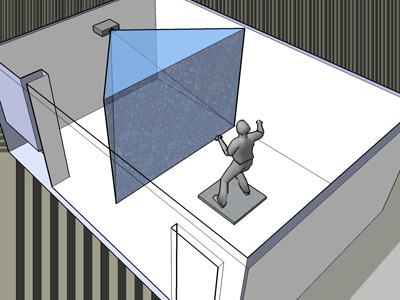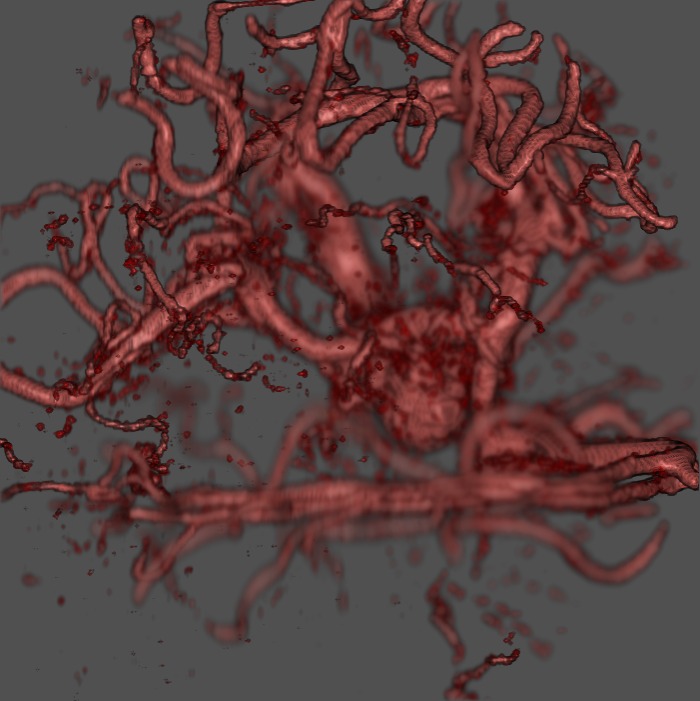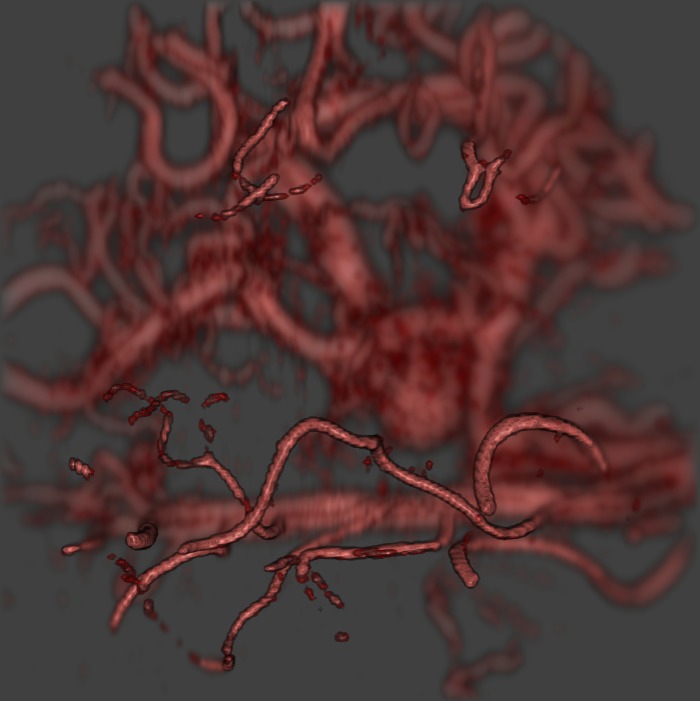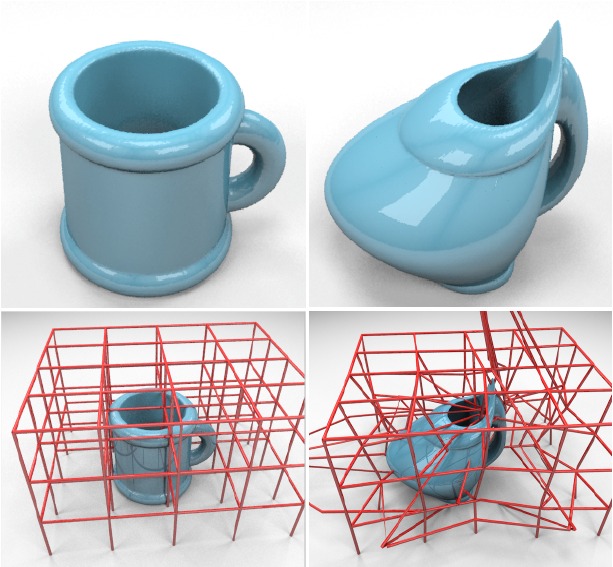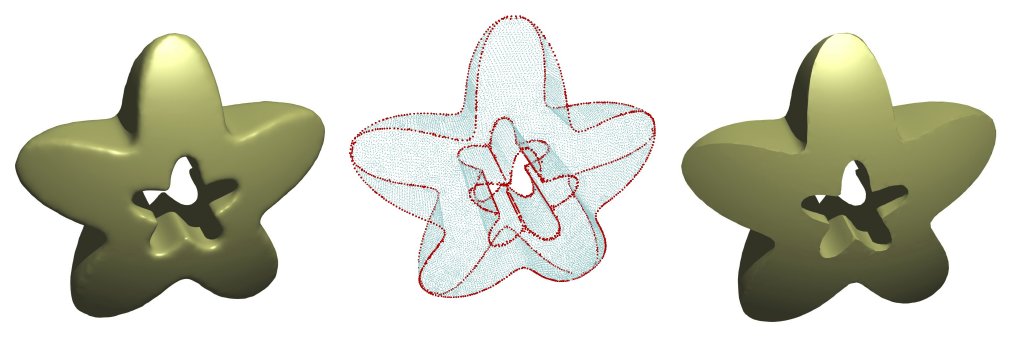Section: New Results
Computer visualization
Immersive Virtual Environment for Visuo-Vestibular Therapy: Preliminary Results
Participants : Jean-Dominique Gascuel, Henri Payno, Sébastien Schmerber, Olivier Martin.
The sense of equilibrium aggregates several interacting cues. On patients with vestibular loss, vision plays a major role. In this study, the goal is to propose a new immersive therapy based on 3D opto-kinetic stimulation. We propose to demonstrate that 3D monoscopic optical flows are an efficient tool to stimulate adaptive postural adjustment. We developed an immersive therapeutic platform that enables to tune the balance task difficulty by managing optic flow speed and gaze anchoring (Figure 5 ). METHODOLOGY: the immersive sessions proposed to vestibular areflexic patients are composed of a repetition of dynamic optic flows, with varying speed and presence or not of a gaze anchor. The balance adjustments are recorded by a force plate, and quantified by the length of the center of pressure trajectory. RESULTS: Preliminary analysis shows that (i) Patients report a strong immersion felling in the motion flow, triggering more intense motor response to "fight against fall" than in standard opto-kinetic protocols; (ii) An ANOVA factorial design shows a significant effect of flow speed, session number and gaze anchor impact. CONCLUSION: This study shows that 3D immersive stimulation removes essential limits of traditional opto-kinetic stimulators (limited 2D motions and remaining fixed background cues). Moreover, the immersive optic flow stimulation is an efficient tool to induce balance adaptive reactions in vestibular patients. Hence, such a platform appears to be a powerful therapeutic tool for training and relearning of balance control processes.
|
Evaluation of Depth of Field for Depth Perception in DVR
Participants : Pascal Grosset, Mathias Schott, Georges-Pierre Bonneau, Hansen Charles.
we present a user study on the use of Depth of Field for depth perception in Direct Volume Rendering (Figure 6 ). Direct Volume Rendering with Phong shading and perspective projection is used as the baseline. Depth of Field is then added to see its impact on the correct perception of ordinal depth. Accuracy and response time are used as the metrics to evaluate the usefulness of Depth of Field. The on site user study has two parts: static and dynamic. Eye tracking is used to monitor the gaze of the subjects. From our results we see that though Depth of Field does not act as a proper depth cue in all conditions, it can be used to reinforce the perception of which feature is in front of the other. The best results (high accuracy & fast response time) for correct perception of ordinal depth is when the front feature (out of the users were to choose from) is in focus and perspective projection is used.
|
Volume Preserving FFD for Programmable Graphics Hardware
Participants : Stefanie Hahmann, Georges-Pierre Bonneau, Sébastien Barbier, Gershon Elber, Hans Hagen.
Free Form Deformation (FFD) is a well established technique for deforming arbitrary object shapes in space. Although more recent deformation techniques have been introduced, amongst them skeleton-based deformation and cage based deformation, the simple and versatile nature of FFD is a strong advantage, and justifies its presence in nowadays leading commercial geometric modeling and animation software systems. Since its introduction in the late 80's, many improvements have been proposed to the FFD paradigm, including control lattices of arbitrary topology, direct shape manipulation and GPU implementation. Several authors have addressed the problem of volume preserving FFD. These previous approaches either make use of expensive non-linear optimization techniques, or resort to first order approximation suitable only for small-scale deformations. In this paper we take advantage from the multi-linear nature of the volume constraint in order to derive a simple, exact and explicit solution to the problem of volume preserving FFD. Two variants of the algorithm are given, without and with direct shape manipulation. Moreover, the linearity of our solution enables to implement it efficiently on GPU (Figure 7 ).
Sharp feature preserving MLS surface reconstruction based on local feature line approximations
Participants : Christopher Weber, Stefanie Hahmann, Hans Hagen, Georges-Pierre Bonneau.
Sharp features in manufactured and designed objects require particular attention when reconstructing surfaces from unorganized scan point sets using moving least squares (MLS) fitting. It's an inherent property of MLS fitting that sharp features are smoothed out. Instead of searching for appropriate new fitting functions our approach computes a modified local point neighborhood so that a standard MLS fitting can be applied enhanced by sharp features reconstruction. We present a two-stage algorithm. In a pre-processing step sharp feature points are marked first. This algorithm is robust to noise since it is based on Gauss map clustering. In the main phase, the selected feature points are used to locally approximate the feature curve and to segment and enhance the local point neighborhood. The MLS projection thus leads to a piecewise smooth surface preserving all sharp features. The method is simple to implement and able to preserve line-type features as well as corner-type features during reconstruction (Figure 8 ).



